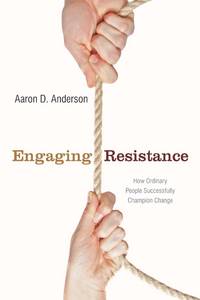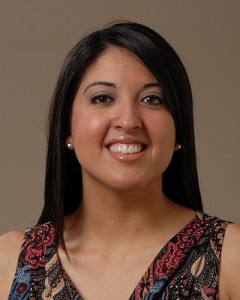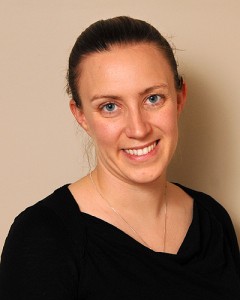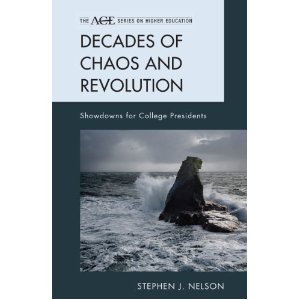 Accolades – below are news and notes from our alumni, faculty, staff, and students. We are proud of all the amazing accomplishments by our Neag family. If you have an accolade to share, we want to hear from you! Please send any news items (and story ideas) to shawn.kornegay@uconn.edu.
Accolades – below are news and notes from our alumni, faculty, staff, and students. We are proud of all the amazing accomplishments by our Neag family. If you have an accolade to share, we want to hear from you! Please send any news items (and story ideas) to shawn.kornegay@uconn.edu.
Students
The Neag School of Education recognized the following students in the Neag Research Awards: Stephen Kilgus and Rebecca Stearns have received 2012 Outstanding Doctoral Student Researcher Award; Lesley Willis has received the 2012 Outstanding Master’s Student Researcher Award; and Briana Hennessy has received the 2012 Outstanding Teacher Candidate Researcher Award. The Neag Research Awards were established to emphasize the high value Neag School faculty and leadership place on research and to recognize those faculty, students, and alumni who are making significant contributions to knowledge in their fields through the implementation of extensive, ground-breaking, and influential research agenda.
A team of students from the Renzulli Academy of Hartford, earned top honors by a panel of accredited designers and architects at the first annual New England Design Symposium (NEDS), hosted by the Independent Day School of Middlefield. The Renzulli team, operating on a landscape theme, came up with a solution to the school’s inadequate parking lot problem. Presented with a complicated problem involving parking and student drop-off in the morning, the students offered a solution based on creating a new parking lot, widening the existing driveways, and reconfiguring IDS’s central circle.
Don Briere, a doctoral candidate, was recognized at the 9th International Conference on Positive Behavior Support in Atlanta, GA. Briere received the Outstanding Poster Presentation award, which has been established in honor of Dr. Edward (Ted) Carr. The award recipient receives a stipend from anonymous donors
to the Ted Carr fund and their work is posted on various PBIS websites.
The University of Connecticut selected its 2012 Legacy Leadership Students. Out of 15 recipients, three were Neag students, including: Chris Campbell, Matt Dempsey and Meagan O’Brien. These students, individually and collectively, represent a rich diversity of leadership experiences, personal accomplishments, and academic excellence. Through their actions these Legacy Students have personified character, integrity, maturity, and the potential that lies within every UConn student.
School psychology graduate student, Marisa del Campo, made a presentation at AERA Universid 21 and she was recognized as a representative on the graduate student committee for AERA Division H: Research, Evaluation and Assessment in Schools.
Jessica Raugitinane, an IB/M student, was recognized as an Alma Exley Scholar for her dedication to public service in education.
Stephen Slota, Andrew B. Cutter, Gerard Jalette, Greg Mullin, Benedict Lai, Zeus Simeoni, Matthew Tran, and Mariya Yukhymenko, led by Professor Michael Young, published “Our Princess Is in Another Castle: A Review of Trends in Serious Gaming for Education” in Review of Educational Research.
Alumni
Monika Lopez Anuarbe is an assistant professor of economics at Connecticut College in New London, Conn. She has been a visiting assistant professor in economics at Connecticut College since fall 2010 and a visiting instructor since 2006.
Manju Banerjee, an ADHD expert, was named director of the Institute for Research and Training at Landmark College, a two-year institution in Vermont that specializes in serving students with learning disabilities and attention-deficit disorders. She earned a PhD in special education.
Miguel Cardona, principal of South Meriden, was selected as Connecticut’s National Distinguished Principal Award by the National Distinguished Principal Committee. He earned an EdD and is a current student in the executive leadership program.
Gregory Fink is assistant director of Fraternity and Sorority Life in the Department of the Student Center and Campus Life at Quinnipiac University, after previously working at the Office of Fraternity and Sorority Life at UConn.
Jennifer Fullerty recently published a book entitled, Lifelong Learning. It was published by Parkgate Press and can be found on Amazon.com. She earned an EdD.
Reyhan Burcu Kaniskan won the AERA Division H Dissertation award. Burcu won first prize for her dissertation research “Assessment of Growth: A Comparison of Models for Projecting Growth. She defended her dissertation in September of 2011. She is currently employed as a psychometrician at Pearson, Inc., in San Antonio, Texas.
George R. Lanoue retired as an educator in the Killingly School System of Danielson, Conn., and lives with his wife of 50 years in Island Pond, Vt., where he writes poetry, novels, and articles for the local newspaper.
David Larson, director emeritus of CAPSS and consultant to CommPACT, was named interim superintendent for Middletown.
Sharon Misasi was inducted into Saugerties Sports Hall of Fame. Misasi earned her PhD in educational psychology/counseling psychology.
Marc Nachowitz a doctoral candidate in educational theory and practice at the University of Albany in Albany, N.Y., is the recipient of a State Farm Companies Foundation Doctoral Dissertation Award for his dissertation, “Reading for Deep Understanding: Knowledge-Building and Conceptual Artifacts in Secondary English.”
Peter Scaramuzzo, a teacher at Emolior Academy in the Bronx, was recognized by Chase Bank as a winning teacher in the “My Favorite Teacher” contest.
Keith Sevigny, a science teacher at Annie Fisher School, was recognized as Hartford Schools’ 2012 Teacher of the Year.
Peter Solomon was named Faculty Head Coach of Men’s and Women’s Swimming & Diving at Wesleyan. Solomon earned his MA in kinesiology.
Nicole Waicunas, an English teacher at EO Smith, was recognized with a Sondheim Teacher Award. She graduated with a master’s degree in gifted and talented.
Perry A. Zirkel received two awards at the recent annual meeting of the American Educational Research Association, the organization’s Relating Research to Practice Award for Interpretive Scholarship and the Division A (Administration, Policy and Leadership) Research Excellence Award. She earned a master of arts in education and doctorate in educational administration.
Faculty/Staff
The School Psychology Doctoral Program was ranked No. 4 for its research productivity on authorship credit, journal article publication and citations by the Journal of School Psychology.
Three faculty were recognized by UConn’s Institute of Teaching and Learning at their awards banquet — Doug Kaufman, Catherine Little and Rene Roselle. Kaufman and Little were each recognized as University Teaching Fellows. They were the only faculty to receive the award this year. The University Teaching Fellow Award is the most prestigious award given by the university that recognizes excellence in teaching at the university. Roselle was awarded the Teaching Scholar Award and the only faculty to receive this award. This award recognizes excellence in teaching for non-tenure track faculty within the university.
The Neag School of Education recognized the following faculty members with the Neag Research Awards: Morgaen Donaldson received the 2012 Outstanding Early Career Scholar Award; Katherine Gavin received the 2012 Distinguished Researcher Award; and Lisa Sanetti also received the 2012 Outstanding Early Career Scholar Award. The Neag Research Awards were established to emphasize the high value Neag School faculty and leadership place on research and to recognize those faculty, students, and alumni who are making significant contributions to knowledge in their fields through the implementation of extensive, ground-breaking, and influential research agenda.
The Neag School of Education also recognized the following faculty members for their hard work and dedication with tenure and promotions. The individuals include:
Michael Faggella-Luby, earned tenure and promoted to associate professor
Jason Irizarry, earned tenure and promoted to associate professor
Megan Staples, earned tenure and promoted to associate professor
Casey Cobb, promoted to professor
Janet Fink, promoted to Professor
Xae Reyes, promoted to professor
John Settlage, promoted to professor
Tutita Casa, promoted to associate in residence
Jean Gubbins, promoted to professor in residence
Stephanie Mazerolle, promoted to associate in residence
John Zack, promoted to associate in residence
Melissa Bray was a featured scholar in “Strategies and attributes of highly productive scholars and contributors to the school psychology literature: Recommendations for increasing scholarly productivity,” published in the Journal of School Psychology.
Doug Casa was selected to receive the 2012 President’s Challenge Award by the National Athletic Trainers’ Association. He will be recognized at the annual meeting in June. The honor recognizes a single individual for a lifetime of outstanding contributions that have directly impacted the athletic training profession.
A manuscript that resulted from Casey Cobb’s study of Connecticut magnet schools has been accepted for publication in Education Policy Analysis Archives. He also co-authored an article “Intergroup Relations in Integrated Schools: A Glimpse Inside Interdistrict Magnet Schools” in Education Policy Analysis Archives.
Morgaen Donaldson co-authored an article “Strengthening teacher evaluation: What district leaders can do” in Educational Leadership.
Rachael Gabriel was recognized by the International Reading Association with a 2012 Elva Knight Research Grant, for the project “The Role of Teacher Language in Mediating Student Understanding During Reading Comprehension Instruction.”
NASP announced that Tom Kehle will receive the Legend in School Psychology award at NASP’s next convention.
Jennifer Lease Butts and her advisee, Alex Matiash, a graduate student in the Higher Education and Student Affairs (HESA) program, presented the results of an assessment of the UConn in Cape Town study abroad program. This assessment had been a year-long project involving Lease Butts, a faculty member in the HESA program, and Dr. Ana-Raluca Nahorniac, a program specialist in the Office of Global Programs.
Jennifer Lease Butts, Sue Saunders, and Alex Matiash presented High Impact Practices for Teaching and Conducting Assessment Projects at the American College Personnel Association Conference annual convention.
Melissa Madaus was invited to publish an online article, with her graduate assistant Laura Ruberto, “Application of self-modeling to externalizing and internalizing disorders” in the journal Psychology in the Schools. Madaus also co-presented with Michael Faggella-Luby on “Keeping up with the Joneses: National Post-School Outcome Collection Practices and Keys to Success” at the Annual Capacity Building Institute.
Anysia Mayer has been elected to serve as Program Chair of the Tracking and Detracking SIG for 2012-2015. Her term begins after the conclusion of the 2012 Annual Meeting.
Yuhang Rong gave the Commencement Address at the Southern Connecticut Chinese School graduation. Rong was named chair of AACTE’s Global Diversity Committee and participated as a panelist on “The Policy and Politics of Global Teacher Education” at the AACTE conference in Chicago. In addition, he presented “Clinically Based Teacher Education in the US” at the AERA-Universitas 21 Educations Deans Conference.
Sue Saunders co-presented a program entitled “Supervision strategies for early career professionals: Creating new possibilities” at the American College Personnel Association Conference.
Richard Schwab has a book chapter out in Attaining an Academic Appointment. In addition, he was elected to serve on the university-wide “Committee of Three” for a three-year term. The Committee of Three functions in faculty dismissal and grievance procedures. Complaints involving promotion, tenure, and reappointment decisions may be brought to the Committee of Three only at the end of a sequence of peer review procedures, including those of the Faculty Review Board.
Rebecca Stearns and Kelly Pagnotta, with the Korey Stringer Institute, presented “Exertional Heat Illness” at the Mercy Sports Medicine Conference.
 This summer is filled with excitement with all of the happenings under the umbrella of “assessment” at the Neag School of Education. This includes:
This summer is filled with excitement with all of the happenings under the umbrella of “assessment” at the Neag School of Education. This includes: Accolades – below are news and notes from our alumni, faculty, staff, and students. We are proud of all the amazing accomplishments by our Neag family. If you have an accolade to share, we want to hear from you! Please send any news items (and story ideas) to
Accolades – below are news and notes from our alumni, faculty, staff, and students. We are proud of all the amazing accomplishments by our Neag family. If you have an accolade to share, we want to hear from you! Please send any news items (and story ideas) to  Engaging Resistance: How Ordinary People Successfully Champion Change” not just for practical reasons, but for idealistic ones, too.
Engaging Resistance: How Ordinary People Successfully Champion Change” not just for practical reasons, but for idealistic ones, too.

 Itʼs hard to match UConn Kinesiology Professor Douglas J. Casaʼs energy and dedication when it comes to protecting athletes from exertional heat stroke and promoting the research of UConnʼs Korey Stringer Institute for the prevention of sudden death in sport.
Itʼs hard to match UConn Kinesiology Professor Douglas J. Casaʼs energy and dedication when it comes to protecting athletes from exertional heat stroke and promoting the research of UConnʼs Korey Stringer Institute for the prevention of sudden death in sport.
 JFK’s assassination; the civil rights, women’s and free speech movements; Vietnam; the Cold War; and an array of social inequities made the 1960s and ’70s one of the most compelling and challenging eras in not just the history of the United States, but in the history of higher education.
JFK’s assassination; the civil rights, women’s and free speech movements; Vietnam; the Cold War; and an array of social inequities made the 1960s and ’70s one of the most compelling and challenging eras in not just the history of the United States, but in the history of higher education.